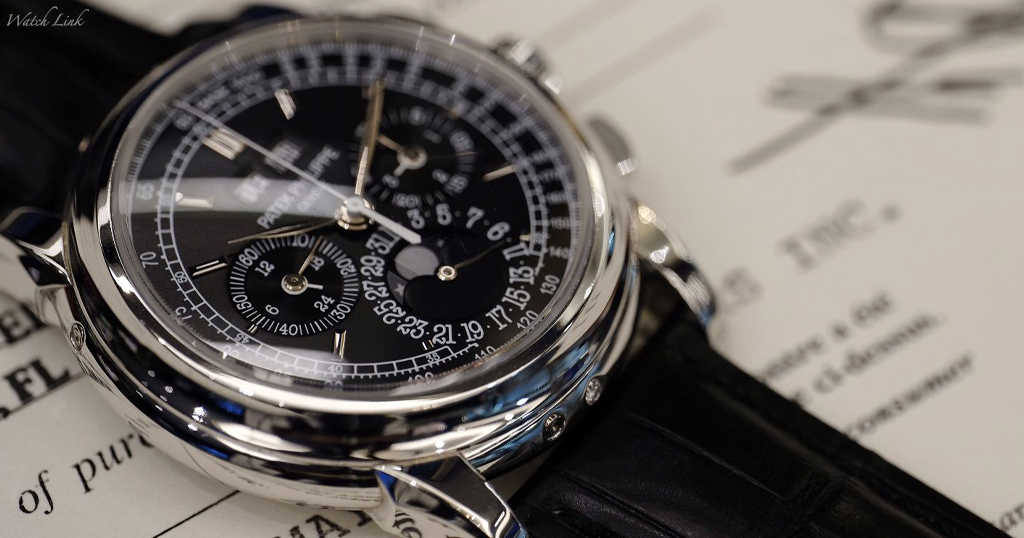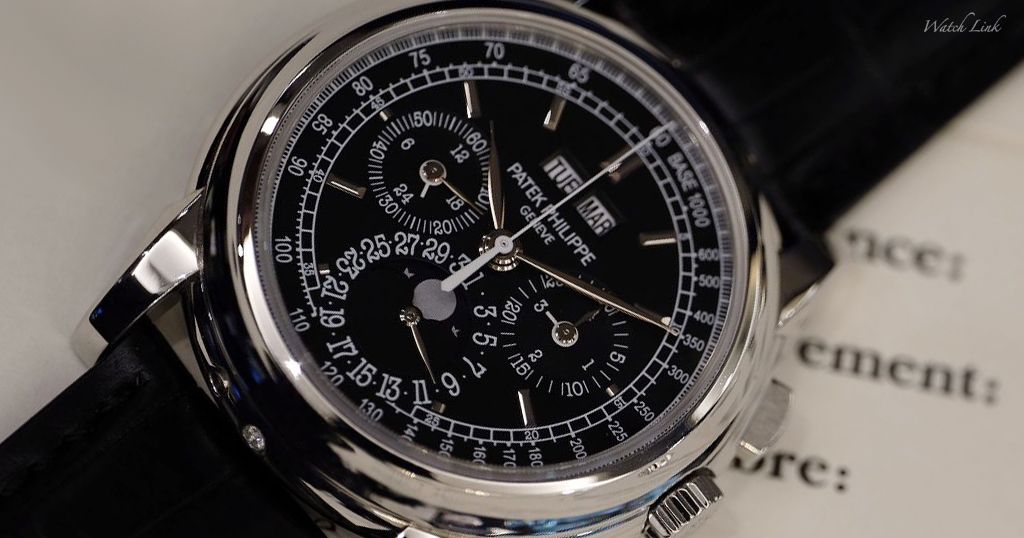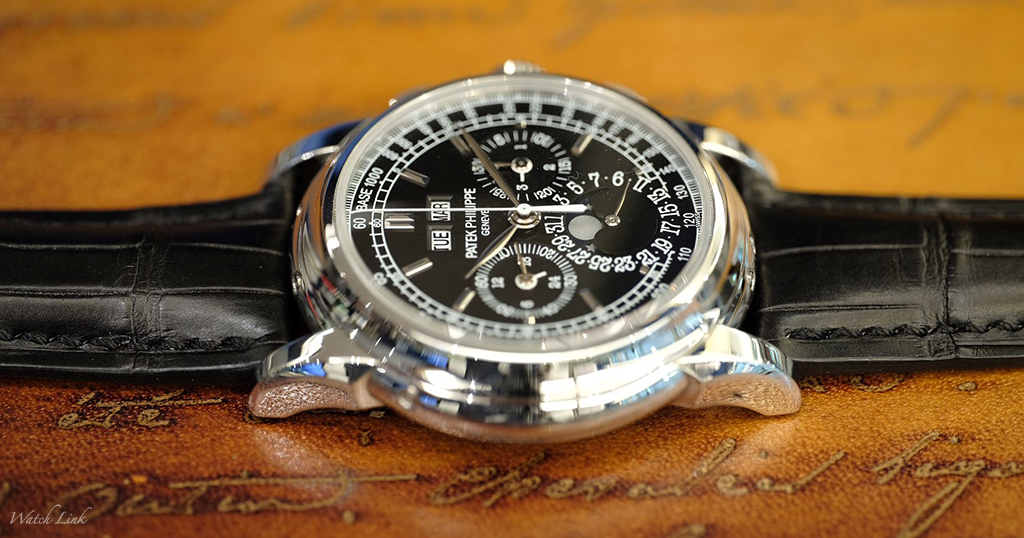
Throughout the long heritage of Patek Philippe, the linear Grand Complication is what elevated Patek Philippe into the master of watchmaking. They are arguably the most important combination of complications in 20th-century horology, especially the iconic perpetual calendars collection.
The very first serially produced perpetual calendar with chronograph dates by Patek Philippe is the Ref 1518 back in 1941. Now a highly collectable and elusive reference for collectors, the Ref 1518 is the watch that started it all.
Following the birth of this icon, the world witnessed a couple of amazing successors such as 2499, 3970, 5020, 5004, 5970, 5270 and 5204. The evolution of Patek Philippe’s perpetual calendar chronograph is drastic, but yet keeping to the tradition and heritage of Ref. 1518. The perpetual calendar chronograph is, arguably, the most important watch in Patek Philippe’s history.
Today, we will be featuring what many collectors consider to be the “BEST” ever watch (not just grand complication) made by Patek Philippe. Some even call it the last of the great Patek Philippes. This is a huge statement considering that the Maison has produced numerous icons over the years.

It’s nonetheless the iconic 5970P. This specific example I got my hands on here today is in pristine unworn condition, having sat safely in the safe of the previous owner.
The Birth of a new icon

The 5970 is Thierry Henry’s first challenge from his father to step up into a management role at Patek. The aim was to reinterpret the perpetual calendar chronograph with a modern identity.
Launched in 2004, the Patek 5970 was an instant hit, creating a waiting list many years in advance before its discontinuation. It was then replaced by the 5270 with the introduction of a fully in-house movement. A seven-year production run means that the 5970 has the shortest production run of any Patek perpetual chronograph. The 5970, estimated to be made in around 2,800 examples, 5970 has very strong potential for appreciation. The Platinum variant has around 300-500 examples made.
Although it shares the same movement as its predecessor 3970, the increased diameter makes the balance of the watch far superior to that of the smaller 3970.
It’s hardly a surprise that the 5970 is highly collectable. In my opinion, the 5970 is the most perfect, balanced and wearable contemporary dress grand complication ever designed by Patek Philippe.
The Patek Philippe 5970 is probably the closest thing you get to a balance between the perpetual calendar chronographs of pre-2000s and contemporary watches. It’s a little bigger than the 2499 and the 3970 and still uses a Lemania base movement with a very traditional dial.
It pays tribute to the very best elements of Patek’s historical perpetual calendar chronographs while also bringing some very unique design elements to render the most visually appealing timepiece by Patek. The visceral attraction on first eye was incredible.
The platinum 5970P is the only regular production model that has differences from the other 5970s with two discreet but clear differences. The first is that each case is set with a diamond at six o’clock. The second is that the marker for 120km appears on the tachymeter scale, whereas in the other versions the word “Swiss” appears. In this case “Swiss” is subtly integrated into the second’s track below. This is the only regular production 5970 where the 120 marker appears.
Case

Despite the thick girth at 13.5mm, it’s overly compensated by the magical engine powering it and the proportionate case size. One of the best things about the 5970 is how it wears. At 40mm it is a full 4mm larger than the 3970 and there’s no way you can miss the change. The case is hefty but well proportioned and it really does wear like a dream. There aren’t too many watches at this level of complication that you could truly consider as everyday wear options. If you get a chance to put one on your wrist, don’t miss it. It’s an extremely joyful experience.
Thierry Stern began with one critical criterion when designing the 5970. To make his watch 40mm in diameter to aid visibility. To him, 40mm was the perfect size of a modern classic. The key focus was legibility, which means the 5970 will need more space than the 3970 allowed. The indication of the day and month was a challenge and he nearly included a magnifier on the glass to enable them to be read easily. Thank god he didn’t! Instead of that radical idea, he added 3 mm in case size and the bold tachymeter combined to create a far more assertive and sportier wristwatch than the 3970. At 40mm, the 5970 was by no means big for its day, but it allowed the subdials space to breathe; as a result, the date on the subdial at six o’clock is noticeably more legible, as Patek Philippe made that subdial bigger.
Patek decided to choose the rectangular pushers instead of the traditional round pushers to give the 5970 a more aggressive and youthful look. The use of the rectangular pushers was a visual masterstroke that perfectly complemented the similarly more aggressive addition of the bold tachymeter.

Another stroke of design brilliance related to the 5970 is the unique shape of its lugs. Patek Philippe has always exhibited design daring and flair in its lugs. While the 5970 does not carry forward some of the iconic lugs such as the “spider” and “flame”, Thierry Stern managed to work out a solution with his team to create a new lug design that was strong and yet refined.
Dial

The dial is rich but, somehow, every component has its own designated, uncompromised space.
It has the most balanced expression of perpetual calendar and chronograph information while featuring the most perfect integration of seconds track, tachymeter and date display in an achingly beautiful cynosure of design brilliance. The 5970 was a significant milestone in Patek’s family heritage, with Thierry Stern being given the challenge to design a new perpetual calendar chronograph to replace the venerable 3970. The 5970 is conceptualised based on Thierry’s vision of a watch that would represent a bridge between his father’s generation and his.
One of the most notable features in Patek’s chronographs is the tachymeter, which is a scale used to calculate an average speed over a pre-determined distance. You start your chronograph when beginning the kilometre and stop it at the end and the chronograph seconds hand will show the average speed of the object, for example, a horse or a car, over that distance. Because of the chronograph’s roots in both sports and auto-racing, the very first Patek Philippe perpetual calendar chronograph, 1518, featured this scale at the perimeter of its dial, giving it a decidedly more aggressive, instrument-like expression. The tachymeter also served one other important purpose. That is to ensure the subdials of the watch did not feel stranded in the centre of the dial.
It should be noted that the hands of the 5970 also harked back to Patek Philippe’s past. 1518, 2499 and the first two series of 3970 watches all featured leaf-shaped hands. However, with the last two series of the 3970, these hands were replaced with the rather more minimalistic baton hands. Considering the sportier and more aggressive nature of the 5970, it seems appropriate that Thierry Stern revived the more stylised and substantial leaf hands.
Movement

The Lemania-based CH 27, needs no introduction as it has been the base movement of Patek grand complications since Ref. 3970 and was also based on the same Lemania movement that powered Omega Speedmaster to space.
As all Patek modified Lemania movements, the CH 27 is heavily modified and transformed into a masterpiece of beauty with drastic improvements over the standard calibre. The CH 27 has a free-sprung Gyromax balance wheel, a completely redesigned chronograph lever and spring, a fully supported chronograph drive wheel, an escape wheel end-stone, a Geneva-style stud holder for the hairspring, and a cap for the column wheel.
Just as you expected, it’s finished beautifully with incredible steelwork, crisp bevels, and a proportionally large balance that dominates the view through the sapphire case back. This CH 27 is one of the more historically significant for Patek, and finding it in what is otherwise a very modern watch is special. The level of finish for the movement is breathtaking, enabling it to be awarded the prestigious Geneva Seal (which is later replaced by Patek Seal for other new production models).
The chronograph function is crisp and the reset is light, but characterised by a distinct click as the reset hammer engages with the heart cams to reset the chronograph. Patek has also taken steps to minimise the amount of chronograph backlash that can happen when the drive and Chrono wheel mesh and their teeth don’t engage precisely.
Final Thoughts

Patek’s tight production isn’t about creating artificial scarcity. It’s simply impossible to hand-make more than a limited number per year. With the 5970, it boggles the mind that so many complications fit in such a clean design at all.
The point is that the 5970 simultaneously pays tribute to the very best elements of Patek’s historical perpetual calendar chronographs, a complication the company pioneered in wristwatch format in 1941, while also bringing some very unique design elements to render the most aggressive and visually stunning model that Patek had ever produced.
Regardless, the 5970 remains the pinnacle of modern watch collecting and it will be where I conclude this journey into perpetual calendar chronographs from Patek Philippe. I will not go into the in-house 5270 and 5204 because they are still being made, thus the story has yet to really be formed on these watches.
The 5970P is a watch with all the classic Patek design cues, quoting from different eras of the brand’s long and rich heritage, yet with an altogether sportier and contemporary feel to it. Platinum with a black dial. There really is no better combination.
It comes as no surprise that the platinum version is one of the most desirable Patek Philippe 5970s. Aside from the black dial, which can never go wrong for its versatility, the platinum alone could be responsible for the astronomical demand. After all, platinum is indeed the most precious out of the precious metals when it comes to wristwatch cases. The 5970P is no exception.
The 5970P was the last variant to be introduced. The short one year production period further increases its appeal.
Combining all the factors of the last generation Lemania based grand complication as well as being the first watch to be introduced under Thierry Stern’s leadership, the Patek Philippe 5970 is truly something special.
If you were to ask Patek Philippe collectors what their favourite complication was, there’s a pretty good chance that the grand complication would take the first spot.
If you manage to get one, the 5970 will probably end your horological addiction because it’s one of the last watches you’ll ever need.
Based on historical price data from auction houses and transacted sales history in the secondary market, the projected growth per annum for the 5970P is estimated to be around 8%. Before Patek sports models pick up in demand, the grand complications were highly desirable a decade ago. In 2010, the average appreciation of grand complications was around 13% per annum. As classic watches will continue to attain demand, we might soon see a rising trend in interest for Patek Philippe dress watches.

